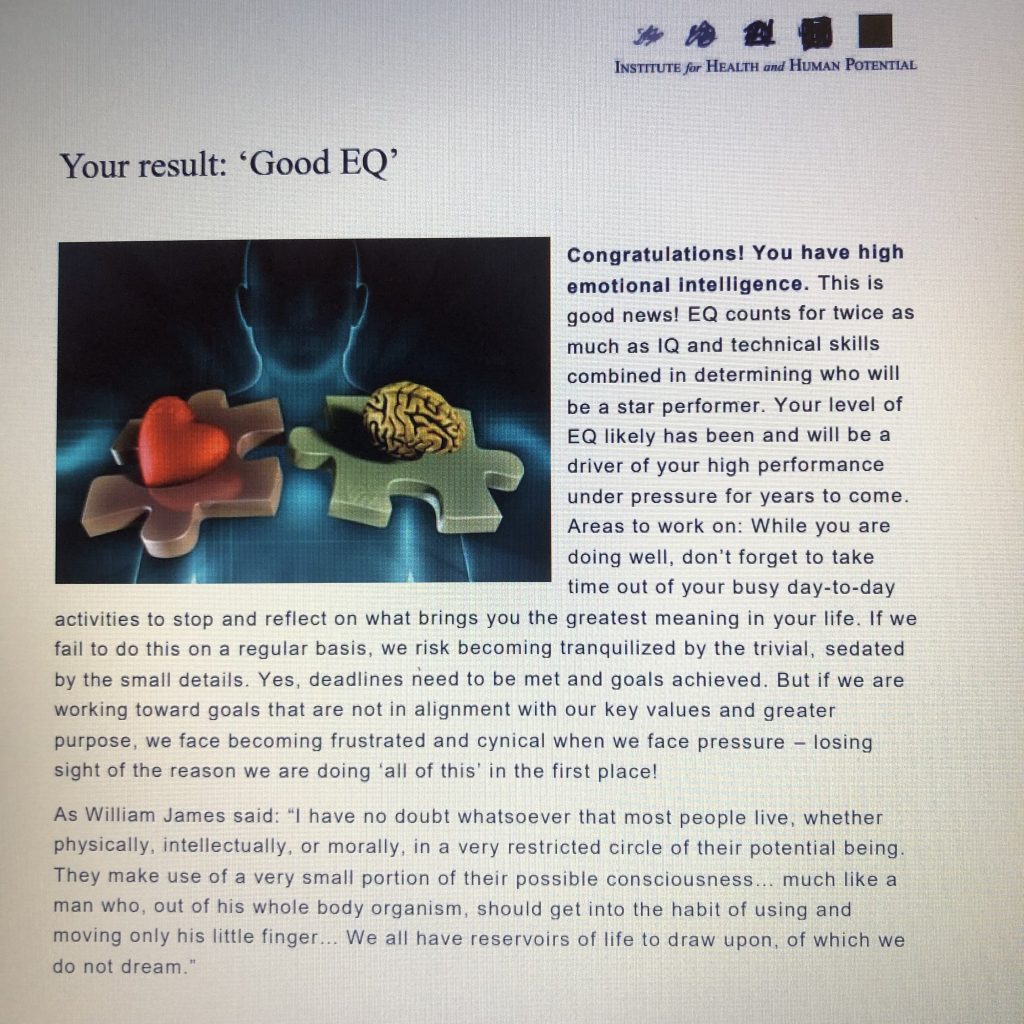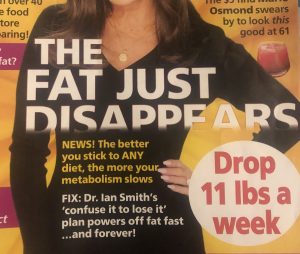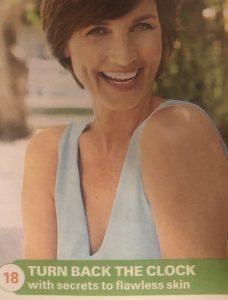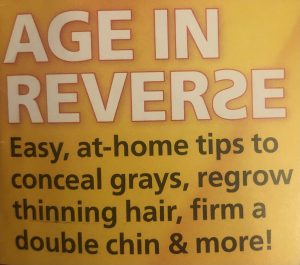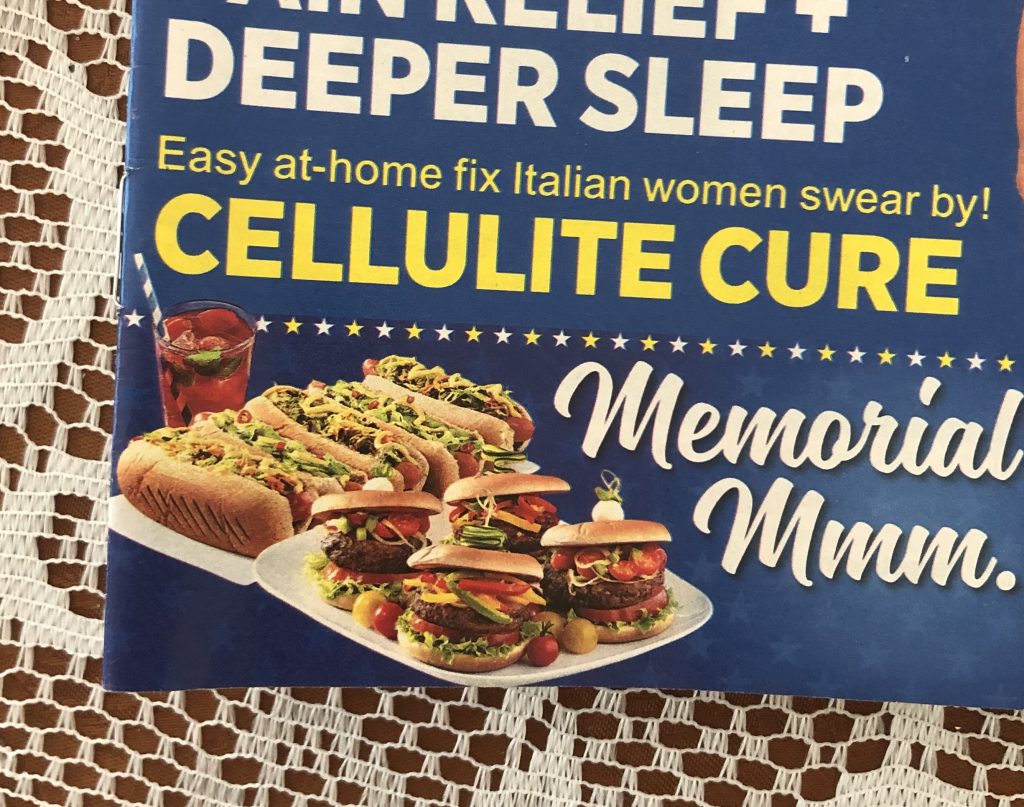I really like how Dr. Linda Ferguson explains the relationship between self-regulation (SR) and emotional intelligence (EQ) in the second part of her five-part YouTube series called Emotional Intelligence Series. Ferguson explains that both self-regulation and emotional intelligence are the links between what we think and what we feel and that they are both entirely ours. Right off the bat, with this description, she demonstrates an empowering style; encouraging us to fully acknowledge our inner world and to be the best version of ourselves that we can be by being pro-active toward our own emotional good health.
Honestly, I was nervous to take an online EQ test. I was afraid to have my recent fears, that I’m officially an emotional wreck with the self-regulating ability of a teenager, confirmed. Surprised and relieved to read my results from a quiz I found on the IHHP’s (Institute for Health and Human Potential) website, I was immediately reminded of my tendency to catastrophize. Apparently, I’m doing okay.
I see self-regulation as the outward manifestation of emotional intelligence, and vice versa; this is how I’ve always thought of it anyway. We are the bicycle and our SR and EQ are the wheels; each of the 3 parts interdependent upon each other. Tires with good tread, full of air, without damage, sitting on a good solid round frame with no rust as a metaphor for a fully functioning SR-EQ circuit that determines how the bicycle moves.
Lately, my regulation of self has been challenged for so many reasons that it’d take another blog to explain. I’ll just say that menopause has brought a new level of life challenges that are currently stretching my ability to remain emotionally intelligent and self-regulating. Listening to Dr. Ferguson speak on this subject has come at a perfect time when I’ve really needed something.
One of the best examples I can think of, of the ways in which emotional intelligence can be displayed, is by watching people during conversations and situations, or life circumstances, in which they are not getting what they want. To continue with my bicycle analogy, these are the times when the rubber meets the road of life.
The mind-body connection between SR and EQ is undeniable. Any breathing technique that I’ve tried during times of stress to help me get through has helped me to regain composure or at least not to spin out of control. I used to do 911 dispatch and used some of the very techniques mentioned by Dr. Ferguson to get through some difficult calls and difficult nights in general. Continuing to recognize when these techniques are needed and then actually employing them is a sure way to keep improving my own EQ. Reacting to stressors really is the easiest thing to do in moments of stress. Self-regulation however takes committed self-awareness and the willingness to continually put into practice things like meditation, breathing, journaling or simply taking a day, or an hour or 10 minutes, to be alone and quiet with zero distraction to genuinely self-reflect. These practices, in my experience all help to improve emotional intelligence.
